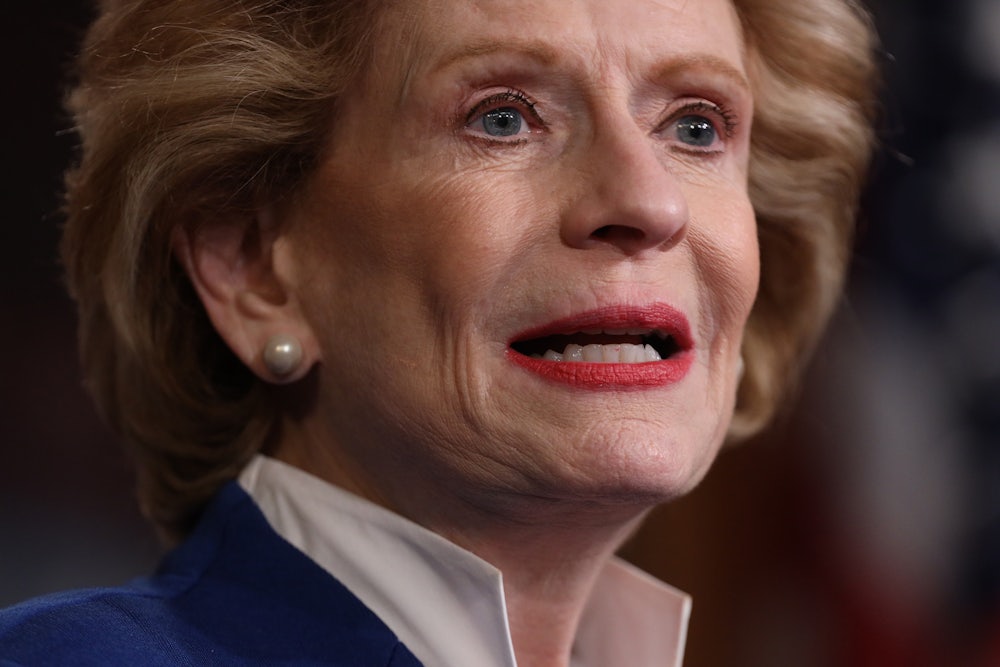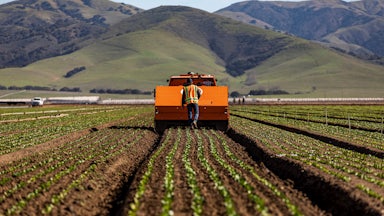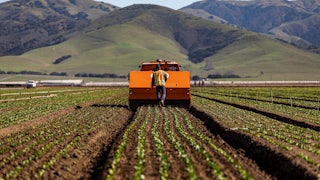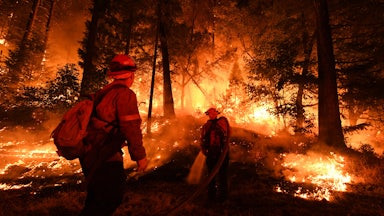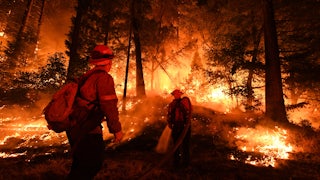On Thursday, while President Biden met with world leaders at the climate summit, the Senate Agriculture Committee convened to vote on the Growing Climate Solutions Act. The bill seeks to create a certification program within the Agriculture Department to help establish agricultural carbon markets.
Carbon markets have been integral to the climate plans offered thus far by the White House and Congress. In January—hours before the insurrection at the Capitol—Democratic Senator Debbie Stabenow of Michigan told reporters that the creation of carbon markets would be a “top priority” for the Senate Agriculture Committee. (With Democrats reclaiming a Senate majority, Stabenow has since assumed the role of committee chair.) And on Thursday morning, Stabenow held true to her words. As the committee waited for Senator Ben Ray Luján to arrive to officially reach a quorum, Stabenow reminded her fellow senators that “creating new revenue streams through voluntary markets is only one tool in the toolbox,” and echoed Senator Chuck Grassley’s concerns about middlemen and the potential for vertical integration between “the farmers and the polluters”—an attempt by the Iowa Republican to separate family-owned-and-operated farms from the corporate behemoths that dominate the field.
The bill, backed by 17 Democratic and Republican senators apiece, passed the committee via voice vote unanimously. It will now wait in line for a full-chamber vote. On the whole, it was an entirely agreeable, diplomatic affair—a true instance of climate-focused bipartisanship. The only problem: Carbon markets, much like bipartisan-backed biofuels, are not so much a solution as they are a way for industry stakeholders to signal their interest in Doing Something while clinging to the very practices that have helped lead to the current climate crisis.
Carbon offsets can already be purchased, with varying degrees of reliability, by companies simply looking to green their profile for public relations reasons. This bill would help establish an official offset system. That is, companies could pay landowners to leave trees standing instead of harvesting them or farm crops that store carbon in the soil, to offset their own emissions. At some point, the federal government could theoretically establish an emissions cap, creating a flourishing carbon market of companies buying their way to the target.
If this all sounds a little bit like allowing cash-rich companies and corporations to pay off landowners so that they can continue polluting, that’s because that is precisely what offsets and carbon markets are designed to accomplish. The goal is not to snuff out the original source of emissions and pollution causing the problem but instead to try to mitigate those cumulative effects via cold, hard cash. Ag tech companies like Indigo have framed the introduction of a carbon market as a chance to cash in, with a company executive telling Bloomberg, “It’s a little bit of a gold rush out there.” Meanwhile, The Wall Street Journal recently reported on the logging industry’s enthusiasm for the offset model. Its interest in being paid not to log isn’t exactly beyond suspicion, as the Journal noted. There’s worry landowners will be “paid to preserve trees” they weren’t going to cut anyway, “because they grow in forbidding terrain, are far from mills or already subject to conservation agreements.”
The people being paid for these offsets, in most cases, will be large-scale landowners, just as the people paying them will mostly be large-scale corporations. (The Journal’s report found that among those setting their tree stock aside for the offset check was Molpus Woodlands Group, described as “one of the country’s largest timberland investment-management organizations.”) The fundamental effect of offsets will be money—subsidized by the federal government—moving from one wealthy person’s pockets to another’s.
As Charlie Mitchell wrote for The New Republic earlier this month, the lobbying arm of the agriculture industry—namely, the American Farm Bureau Federation—has quickly pivoted since President Joe Biden’s election victory in November in an attempt to brand itself as willing to stake out a progressive, proactive position on climate change. The truth, Mitchell found, is something different. The Federation is more concerned with large-scale corporate farm outfits being able to continue exploiting labor and environmental regulatory loopholes than it is in creating a climate-friendly industry. So-called solutions like carbon markets are the natural result of this pivot.
There are measures baked into the Growing Climate Solutions Act to start addressing systemic issues within American agriculture. In particular, the bill includes a section designed to ensure the inclusion of farmers of color, who have long been marginalized and run out of business by both the industry and the federal government. The bill also requires an advisory committee made up of stakeholders that would have the power to adjust the rollout of the carbon markets and offsetting programs to achieve parity, which would have to include minority farmers. It also asks both the USDA and the Environmental Protection Agency to first assess the viability of carbon markets before USDA proceeds with the certification process, and calls for an equitable distribution of the subsequent revenue driven by the carbon credits. And by most accounts, there will be environmental benefits to incentivizing farmers to think harder about the ways they treat their soil. As David Montgomery, a geologist at the University of Washington, told Civil Eats, there is “a strong value to setting up a system to reward farmers to take better care of their land, even if the carbon drawdown estimates [turn out to be] much lower than predicted.”
These are all fine, even admirable, initiatives and results when viewed in a vacuum. But carbon markets do not exist in such a contained place. They exist in a world where the agriculture and logging industries have been consolidated with vigor for the past four decades; where Black, Native, and Latinx farmers and farmworkers have been driven into the dirt by consolidation and anti-union state legislation; and where both ag and logging industries have spent millions ensuring that Congress allows them to continue cashing in on their worst practices. The American agricultural system and its subsidies have been designed to reward, not regulate, the emissions-heavy and exploitative meat industry, where more than two-thirds of all American crops eventually end up and workers are treated as replaceable, even in the midst of a pandemic.
While the bill seeks to address some of that—again, an admirable bipartisan result—it’s hard to imagine the creation of carbon markets as being any different from the adoption of biofuels or the plugging of orphaned gas wells without permanently stopping new ones from being drilled. Congress, as well as its industry allies, is intent on showing both Americans and the rest of the world that it is desperate to claim climate victories; it is less interested in passing legislation that would achieve that by undertaking actually difficult measures like tackling fossil fuel production or agricultural water pollution. Instead, we get measures like carbon markets and other solutions in which the rich seek to get richer under the facade of sustainability.
